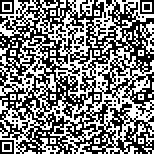| 引用本文: | 戴声佩,罗红霞,郑倩,胡盈盈,李茂芬,李海亮,禹萱.基于MODIS LAI产品的海南岛橡胶林叶面积指数时空变化特征及其影响因素分析[J].中国农业信息,2021,33(2):1-12 |
| |
|
| 本文已被:浏览 799次 下载 472次 |

码上扫一扫! |
|
|
| 基于MODIS LAI产品的海南岛橡胶林叶面积指数时空变化特征及其影响因素分析 |
|
戴声佩1,2,罗红霞1,2,郑倩1,2,胡盈盈1,2,李茂芬1,2,李海亮1,2,禹萱1,2
|
|
1.中国热带农业科学院科技信息研究所/海南省热带作物信息技术应用研究重点实验室,海口,571101;2.农业农村部农业遥感重点实验室,北京,100081
|
|
| 摘要: |
| 【目的 】 分析2000—2020年海南岛橡胶林叶面积指数时空变化特征及其影响因素,为海南岛橡胶林种植长势监测、产量估算及空间优化提供科学参考。 【方法 】 文章选择长时间序列MODIS LAI数据,利用最大月值合成、线性趋势分析及空间分析方法。 【结果 】 (1)从季节变化特征来看,海南岛橡胶林LAI月值经历了一个波动变化过程,2月份到8月份持续增加,9月份到次年2月份持续降低,最低值出现在2月份,最高值出现在8月份,其值分别为2.98±1.62 m2m-2和6.16±1.08 m2m-2。从季节变化的空间分布来看,随着季节变化,海南岛橡胶林LAI呈现从海南岛西部向东部逐渐“变绿”的季节空间变化过程。(2)2000—2020年海南岛橡胶林LAI呈现波动增加趋势,分为3个阶段:2000—2006年持续增加,2007—2015年波动明显,2016—2020年明显增加。LAI增加的区域主要分布在海南岛西部儋州、白沙等市县,LAI减少的区域主要分布在琼中、万宁、三亚等市县。LAI显著增加、明显增加、轻微增加的面积分别为850 hm2、117 350 hm2和357 925 hm2,面积占比分别为0.15%、20.60%和62.83%;LAI显著减少、明显减少加、轻微减少的面积分别为7 350 hm2、7 525 hm2和10 700 hm2,面积占比分别为1.29%、1.32%和1.88%;LAI基本保持不变的面积为67 950 hm2,面积占比为11.93%。(3)海南岛橡胶林LAI在1—2月份出现明显降低的原因是由于海南岛处于纬度较高的热带地区,橡胶林受干旱气候和冷空气影响,表现出落叶林的特征,主要集中在温度较低的1月和2月,多数年份集中在2月初至2月中旬。海南岛橡胶林LAI年际变化受多种因素综合影响,既包含橡胶树年龄自然增长、气候变暖导致的生长季延长、CO2施肥效应等间接影响导致的LAI增加,也包括台风、暴雨、干旱等自然灾害影响导致的LAI减少,还可能受地形、海拔、坡度、坡向的长期效应导致的LAI年际变化趋势呈现空间差异。 【结论 】 利用卫星遥感数据能够快速获取、监测和分析大面积橡胶林叶面积指数,具有覆盖面积大、更新周期短、花费相对少等特点和无损、快速、大面积应用等优点,对于指导农林业生产具有十分重要的理论和应用价值。 |
| 关键词: 叶面积指数 LAI 橡胶林 时空变化 影响因素 海南岛 MODIS |
| DOI:10.12105/j.issn.1672-0423.20210201 |
| 分类号: |
| 基金项目:农业农村部农业遥感重点实验室开放基金项目“海南岛橡胶林叶面积指数遥感估算研究”(2016005);海南省自然科学基金面上项目“基于GEE云平台的易混淆热带作物遥感分类算法研究”(619MS100);海南省自然科学基金面上项目“融合光学与极化SAR数据的海南复杂作物种植结构遥感提取”(620MS086) |
|
| Spatio-temporal changes and its driving factors of leaf area index of rubber plantations in Hainan Island based on MODIS LAI data |
|
Dai Shengpei1,2, Luo Hongxia1,2, Zheng Qian1,2, Hu Yingying1,2, Li Maofen1,2, Li Hailiang1,2, Yu Xuan1,2
|
|
1.Institute of Scientific and Technical Information,Chinese Academy of Tropical Agricultural Sciences/Key Laboratory of Applied Research on Tropical Crop Information Technology of Hainan Province,Hainan Haikou 571101,China;2.Key Laboratory of Agricultural Remote Sensing,Ministry of Agriculture and Rural Affairs,Beijing 100081,China
|
| Abstract: |
| [ Purpose ] The purpose of this study is to analyze the spatio-temporal changes and its driving factors of leaf area index(LAI)of rubber plantations in Hainan Island from 2000 to 2020,and to provide scientific reference for the rubber plantation planting growth monitoring,yield estimation and spatial optimization in Hainan Island. [Method ] The maximum monthly value synthesis,linear trend analysis and spatial analysis methods were employed in this study based on the long term series MODIS LAI data. [Result ] The results show that:(1)The monthly observed value of rubber plantation LAI was increased from February to August,and was decreased from September to February in Hainan Island. The lowest value and highest value appeared in February and August,respectively,and its values were 2.98±1.62 m2m-2 and 6.16±1.08 m2m-2,respectively. The rubber plantation LAI was gradually "greening" from the west to the East of Hainan Island with the seasonal changes. (2)From 2000 to 2020,the LAI of rubber plantation in Hainan Island showed an increasing trend of volatility,which was divided into three stages:continuous increase from 2000 to 2006,significant fluctuations from 2007 to 2015,and significant increase from 2016 to 2020. The areas of increased LAI are mainly distributed in cities and counties such as Danzhou and Baisha in the west of Hainan Island,and the areas of decreased LAI are mainly distributed in cities and counties such as Qiongzhong,Wanning and Sanya. The areas where LAI significantly increased,moderate increased,and slightly increased were 850 hm2,117 350 hm2,and 357 925 hm2,respectively,which accounted for 0.15%,20.60%,and 62.83% of the total area,respectively. The areas where LAI significantly decreased,moderate decreased,and slightly decreased were 7 350 hm2,7 525 hm2,and 10 700 hm2,respectively,which accounted for 1.29%,1.32% and 1.88% of the total area,respectively. The area where LAI remained basically unchanged was 67 950 hm2,which accounted for 11.93% of the total area. (3)Due to Hainan Island was located in a tropical area with a higher latitude,the rubber plantation are affected by arid climate and cold air,showing the characteristics of deciduous forests,mainly in January and February. Therefore,the LAI of rubber plantation decreased significantly from January to February in Hainan Island. The inter-annual changes of rubber plantation LAI in Hainan Island was mainly affected by the compound factors. On the one hand,the LAI increased was attributing by the natural increase of rubber tree age,the extension of the growing season caused by climate warming,and the increase in LAI caused by indirect CO2 fertilization effects. On the other hand,the typhoon,heavy rains,drought and other natural disasters were the main reasons for the decrease of rubber plantation LAI. In addition,the long-term effects of topography,altitude,slope and aspect lead to spatial differences in the inter-annual variation trend of rubber plantation LAI. [Conclusion ] The use of satellite remote sensing data can quickly obtain,monitor and analyze the large-scale rubber plantation LAI. It has the characteristics of large coverage area,short update cycle,relatively low cost,and the advantages of non-destructive,rapid and large-scale application. It is useful for guiding agriculture and forestry industrial production,and has very important theoretical and practical value. |
| Key words: leaf area index LAI rubber plantation spatio-temporal changes driving factors Hainan island MODIS |